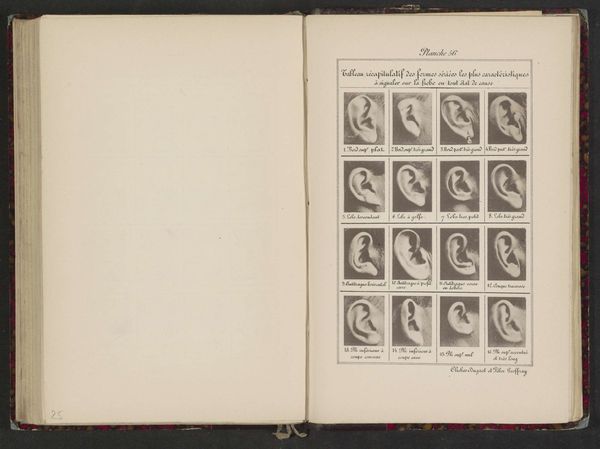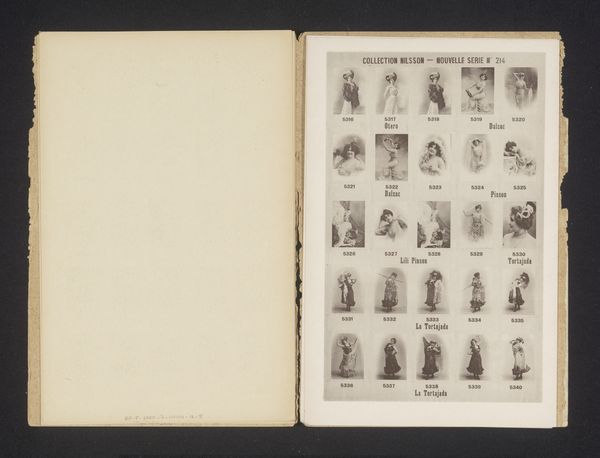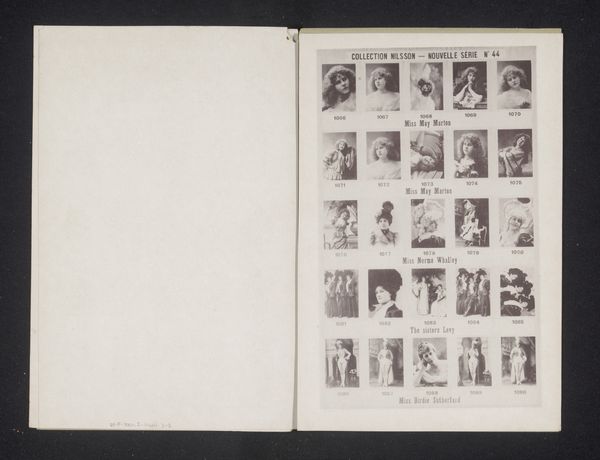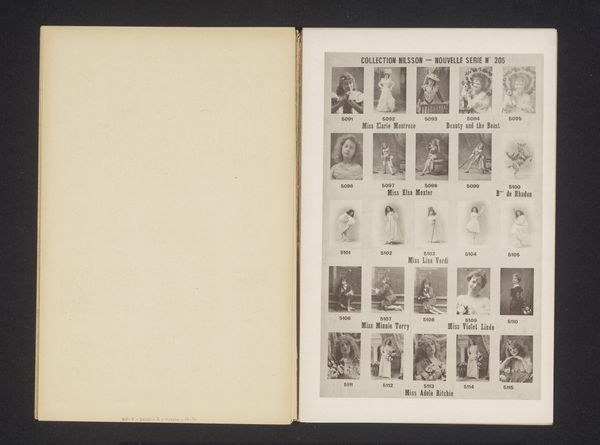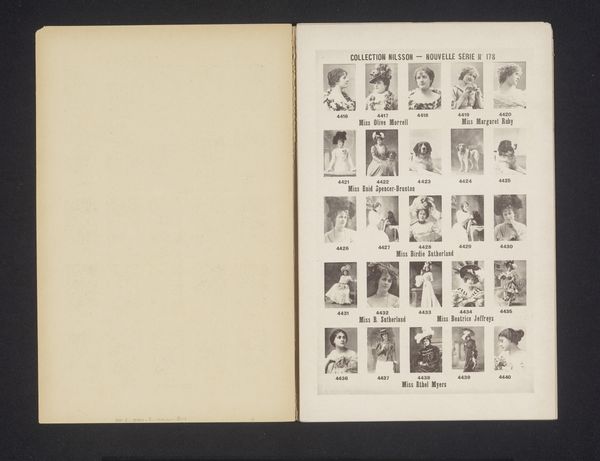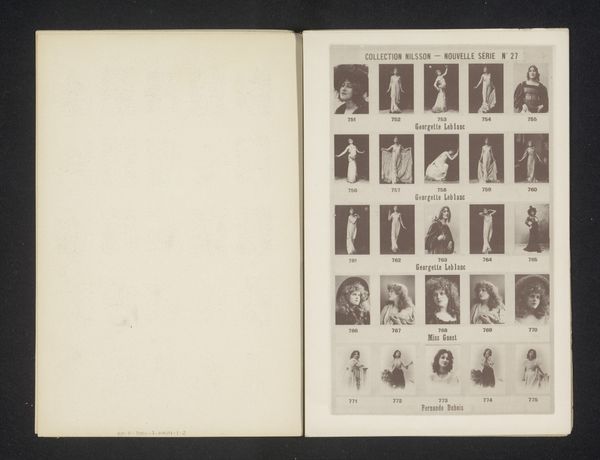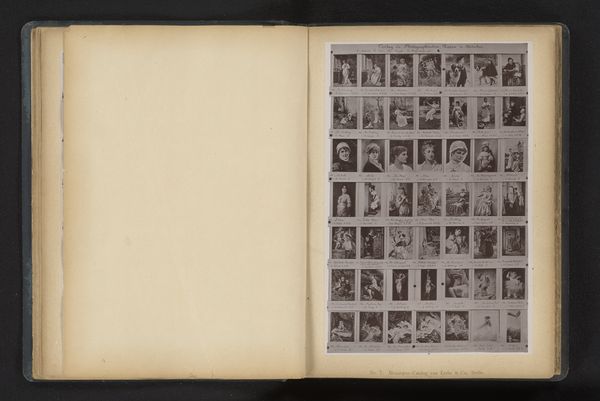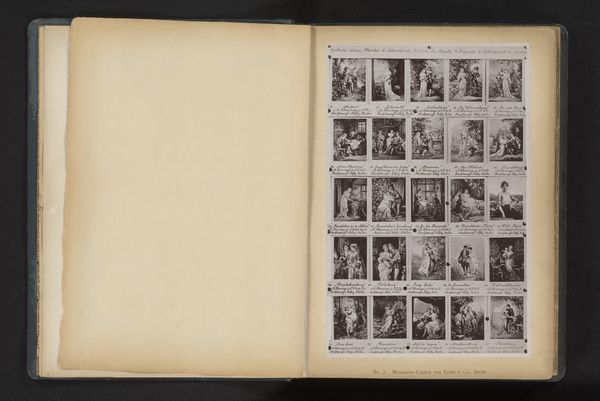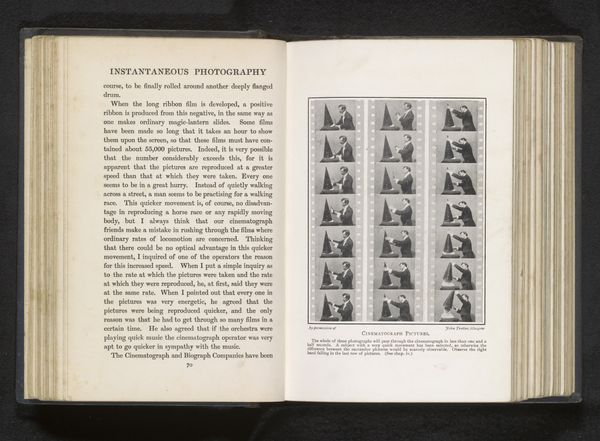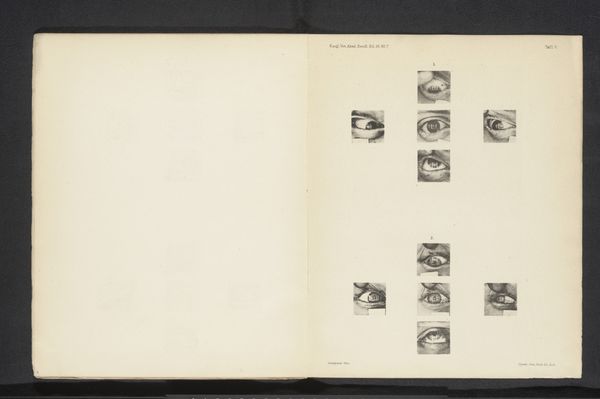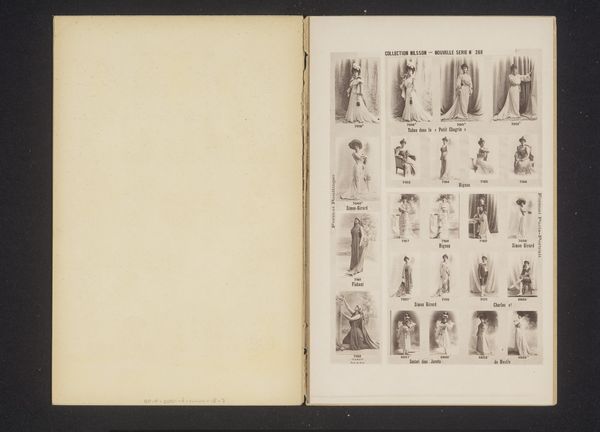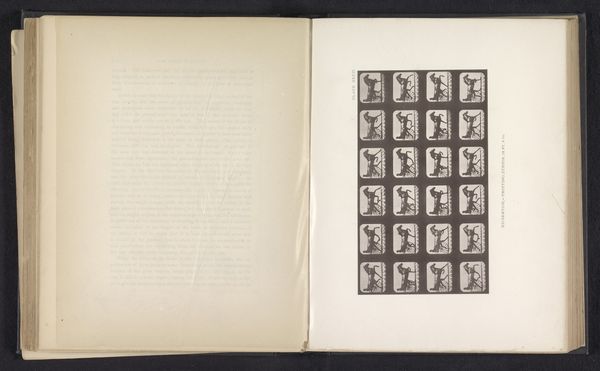
drawing, print, paper, photography
#
portrait
#
drawing
#
aged paper
#
hand-lettering
# print
#
sketch book
#
hand drawn type
#
hand lettering
#
paper
#
photography
#
personal sketchbook
#
hand-drawn typeface
#
fading type
#
geometric
#
sketchbook drawing
#
genre-painting
#
academic-art
#
sketchbook art
#
realism
Dimensions: height 243 mm, width 157 mm
Copyright: Rijks Museum: Open Domain
Curator: Welcome to this examination of “Twaalf afbeeldingen van oren, gerangschikt op vorm en wijdte,” which translates to “Twelve Images of Ears, Arranged by Form and Width.” Created before 1893 by Dugast & Felix Geoffray, this piece is a study, almost scientific in nature, showcasing varied auricles. Editor: Woah. So, okay, first glance? Slightly unsettling, like a Victorian catalogue of curiosities. But also… strangely beautiful? There’s something deeply human about these individual ears, like little landscapes etched with personal history. Curator: Precisely. Note the organization: a grid of twelve distinct ears, each photographed with remarkable clarity, considering the era. Observe the subtle variations in form, each a study in proportion and contour. The meticulous hand-lettering beneath each image provides a descriptive label: “cave,” “intramembranaire,” etc. Editor: They’re classified, like species in a botany book, right? And the fading ink and aged paper add to that slightly spooky vibe. I mean, were these taken from live models or… elsewhere? It makes you wonder about the story behind each ear, the life lived within earshot. Did you intend to add drama? Curator: Indeed, it's academic art, but it exists with realism as a focus for classification. Such an artwork provides visual details without much else beyond formal classification. Consider the intention here: an attempt to codify and understand the diversity of human anatomy. To render the unique qualities measurable via close inspection and organization. Editor: Yeah, I get that. It’s like mapping the terrain of the human body, one ear at a time. Yet, while that order tries to classify, these portraits also reveal vulnerability—I keep seeing little intimate portals, tiny listening stations for a world brimming with noise and secrets. Curator: The texture of each individual's skin even tells its own story and becomes something for us to decipher, in terms of art criticism. Editor: Absolutely. Makes me think that this seemingly clinical study somehow captures something inherently soulful, even emotional, despite the obvious distance. So much complexity rests here. Curator: A compelling juxtaposition indeed. Thank you. Editor: It has been quite a privilege to work here today.
Comments
No comments
Be the first to comment and join the conversation on the ultimate creative platform.
